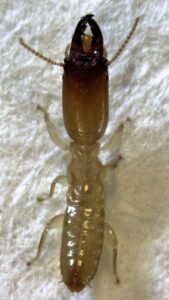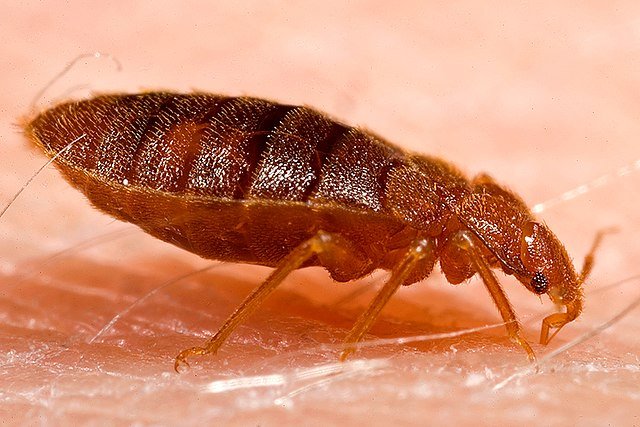Dampwood Termites: Identification, Risks, and Complete Control Guide
 Among the many termites that trouble homeowners, dampwood termites (Zootermopsis spp., Neotermes spp.,Stolotermitidae and related species) are unique. Unlike subterranean termites (Reticulitermes spp.) that build vast underground colonies or drywood termites (Incisitermes spp.) that thrive in arid timber, dampwood termites need constant moisture to survive.
Among the many termites that trouble homeowners, dampwood termites (Zootermopsis spp., Neotermes spp.,Stolotermitidae and related species) are unique. Unlike subterranean termites (Reticulitermes spp.) that build vast underground colonies or drywood termites (Incisitermes spp.) that thrive in arid timber, dampwood termites need constant moisture to survive.
They are less common in urban buildings than other termite groups, but when infestations occur, the damage can be severe—especially in poorly ventilated crawlspaces, leaky basements, or water-damaged structures. Understanding their biology, risks, and control strategies is essential for homeowners, pest professionals, and property managers.
Identification
Size: Dampwood termites are among the largest termites. Adult soldiers can reach 15–20 mm in length.
Color: They range from light brown to reddish-brown. Soldiers have large, dark, well-developed mandibles.
Wings: Reproductive alates have long, translucent wings longer than their bodies.
Castes: Colonies contain reproductives (king and queen), soldiers, and workers.
A distinguishing feature compared to other termites is their preference for moist or decaying wood. If you see large fecal pellets that are sticky rather than dry, this often signals dampwood termite activity.
Biology and Ecology
Moisture dependency: Dampwood termites require wood with high moisture content (above 10–15%). This is why they are found in rotting logs, stumps, and damp basements.
Colony size: Colonies are usually smaller than subterranean termites, typically a few thousand individuals.
Reproduction: Swarming occurs in late summer or early fall. Alates leave the colony at dusk, especially after rainfall.
Feeding: They digest cellulose with the help of gut protozoa, just like other termites.
Predators: Natural enemies include carpenter ants, wolf spiders, and even woodpeckers.
Global Distribution
North America: Especially common in the Pacific Northwest and southeastern coastal regions.
South America: Several species inhabit rainforests where moisture is abundant.
Asia & Oceania: Some species infest homes in tropical and subtropical regions.
Europe: Rare, but imported timber can occasionally harbor colonies.
In short, wherever wood and moisture overlap, dampwood termites can establish.
Risks and Damage
Structural weakening: They hollow out beams, flooring, and joists, especially if water-damaged.
Plumbing leaks: Homes with persistent leaks are at high risk.
Hidden infestations: Because they do not need soil contact, infestations may remain unnoticed until severe damage has occurred.
Economic costs: In the U.S. alone, termites cause billions of dollars annually in damages, with dampwood termites contributing in high-moisture areas.
Public health: Unlike cockroaches or fleas, termites do not spread diseases, but they can indirectly increase risks by weakening structural integrity of homes.
Signs of Infestation
Soft or spongy wood that crumbles when pressed.
Presence of alates (winged reproductives) near windows or lights.
Large fecal pellets—shiny, sticky, and clumped inside galleries.
Mud-like material sealing entry points in wood.
Buzzing or tapping sounds within walls at night (caused by soldiers).
Control Methods
1. Moisture Management
Fix plumbing leaks, roof leaks, and drainage issues.
Improve ventilation in crawlspaces.
Dehumidify basements.
2. Wood Treatment
Boron-based products (e.g., disodium octaborate tetrahydrate) penetrate wood and prevent termite feeding.
Pressure-treated lumber resists infestations.
3. Direct Elimination
Localized insecticide application inside galleries.
Professional fumigation in severe cases (though more common for drywood termites).
4. Barriers
Physical barriers like stainless steel mesh or sand layers around structures can discourage entry.
Advanced Approaches
Biological control: Some entomopathogenic fungi (e.g., Metarhizium anisopliae) are being tested against termites.
Growth regulators (IGRs): Compounds that disrupt molting or reproduction.
Smart monitoring stations: Electronic sensors that detect vibrations inside walls.
Green building strategies: Using non-cellulosic materials in damp-prone areas.
Cultural and Historical Context
While dampwood termites have not shaped history like roof rats during the Black Death, they hold ecological importance. In many cultures:
Native American stories describe termites as “recyclers” of fallen wood.
In tropical South America, indigenous groups observed termite activity as a natural indicator of forest decay cycles.
Modern architects studying biomimicry often cite termite ventilation systems as inspiration for sustainable building design.
FAQ Section
Q1: Are dampwood termites more destructive than subterranean termites?
Not usually. Their colonies are smaller, but in persistently damp environments, they can cause extensive localized damage.
Q2: Can dampwood termites infest dry homes?
Rarely. They need high moisture. If found in a dry home, it usually means there is a leak or water damage.
Q3: How do dampwood termites differ from drywood termites?
Drywood termites survive in low-moisture wood, while dampwood termites require constant moisture. Their fecal pellets also differ in texture and shape.
Q4: Do dampwood termites bite humans?
No, they do not bite humans or pets. Their mandibles are for wood, not flesh.
Q5: What is the best preventive measure against dampwood termites?
Moisture control—repairing leaks, sealing foundations, and improving ventilation.
Q6: Can I treat dampwood termites myself?
Small infestations can sometimes be managed with wood treatments, but professional inspection is strongly advised because hidden damage is common.
Final Thoughts
Dampwood termites are a pest often overlooked compared to their subterranean and drywood relatives. Yet, in regions with high humidity or in buildings with leaks, they can quietly cause severe structural weakening. Because they thrive in hidden, moist areas, early detection is key.
Effective prevention starts with moisture management—fixing leaks, improving airflow, and keeping wood dry. Professional inspections, combined with modern termite monitoring systems, provide peace of mind and long-term protection. While these termites are ecologically important as recyclers of dead wood, in homes and buildings, they represent a financial and safety threat that should not be ignored.
Disclaimer
This article is for informational purposes only. Pest control laws and approved chemicals vary by country. For best results and legal safety, we strongly recommend contacting a licensed pest control professional in your local area. Always make sure that the pest control technician is properly certified or licensed, depending on your country’s regulations. It’s important to confirm that they only use approved products and apply them exactly as instructed on the product label. In most places in Europe, UK, or USA, following label directions is not just best practice—it’s the law.
Author Bio
Nasos Iliopoulos, BSc Agronomist & Certified Pest Control Expert
Scientific Director – Advance Services (Athens, Greece)
Licensed Pest Control Business – Ministry of Rural Development & Food (GR)
With years of experience in structural pest management, Nasos specializes in eco-friendly strategies that combine science, prevention, and practical control.
References
Oregon University - Dampwood Termites
Wikipedia - Zootermopsis angusticollis
Evans, T. A., et al. (2013). Termites and Sustainable Buildings: Biomimicry of Termite Mounds. Biological Reviews, 88(2): 317–331.

